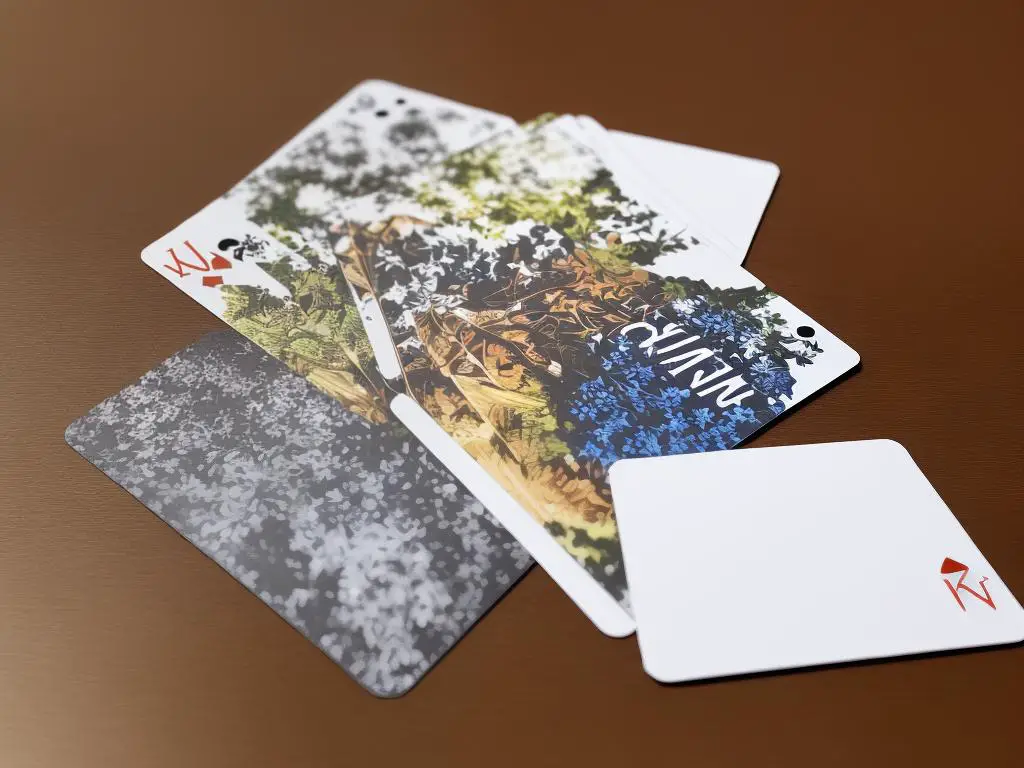Delving into the world of card games, one can find numerous options for leisure and entertainment, Spite and Malice being an enticing choice. This classic two-player card game challenges the participants’ strategic and tactical prowess, while also offering a perfect blend of skill and chance for an enjoyable and captivating experience. In the following essay, we explore the intricacies of Spite and Malice in depth, shedding light on its rules, objectives, and various strategies to help foster a well-rounded understanding of the game. So grab a deck of cards, invite a friend, and brace yourself for an engaging journey into the realm of Spite and Malice.
Understanding Rules & Objectives
Introduction to Spite and Malice
Spite and Malice, also known as Cat and Mouse or Skip-Bo, is a fun card game for two players with the main goal of being the first to get rid of your “payoff pile.” It involves a mix of strategy and luck, making it an engaging game for players of all ages. This tutorial will help you understand the basic rules, card layout, and objectives of Spite and Malice.
Setup and Materials
Materials needed:
- Two standard decks of 52 playing cards (jokers removed)
- A flat surface for card play
Before starting, shuffle both decks together. Each player receives a 20-card payoff pile, faced down. This is their main objective to get rid of during the game. Players can look at the top card of their payoff pile but should not reveal it to their opponent.
Next, the players get a hand of five cards each. You’ll have the opportunity to play these cards to help eliminate your payoff pile.
Lastly, create a shared space for building piles by placing the remaining cards in the center of the table. This shared deck is known as the “stock.”
Card Layout and Terminology
- Payoff Pile: Each player’s 20-card stack, placed face-down in front of them.
- Hand: Five cards each player holds, which are used to play on building piles.
- Stock: Remaining cards placed in the center, used to create building piles.
- Building Piles: Shared piles in the center where players lay down cards in ascending order, starting from Ace to King.
- Discard Piles: Four piles, privately used by each player, to get rid of cards from their hand.
Objective
The goal of Spite and Malice is to be the first player to get rid of their 20-card payoff pile. Players achieve this by building shared piles in ascending order using the cards from their hand, discard piles, and payoff pile.
Gameplay
- Taking Turns:
- During a player’s turn, they can play cards from their hand, the top card of their payoff pile, or any of their discard piles.
- Cards played during a turn must be placed on a building pile, either by starting a new pile or adding to an existing one. Building piles begin with an Ace and must follow in ascending order (2, 3, 4, etc.) until the King.
- A player’s turn ends when they can no longer play any cards or choose not to play any more cards.
- Discarding:
- If a player cannot play any cards, they can place one card from their hand onto one of their discard piles, and their turn ends.
- Each player can have a maximum of four individual discard piles.
- Discard piles are played in a “last in, first out” order, meaning the top card must be played first.
- Drawing Cards:
- Once a player’s turn ends, they must draw cards from the stock until they have five cards in their hand again. If the stock runs out, reshuffle the cards in the center to create a new stock.
- Continuation of Gameplay:
- Play continues as described above, with each player taking turns to lay down cards on the building piles and drawing new cards when needed.
- The first player to lay down all the cards in their payoff pile wins the game.
Winning the Game
The game ends when one player has successfully played all the cards in their payoff pile onto the building piles. That player is the winner.

Developing Strategy & Tactics
Spite and Malice Strategies
Spite and Malice, also known as Cat and Mouse or Skip-Bo, is a competitive card game played with two players but can be expanded to accommodate more players. The goal is to be the first player to empty their goal pile. To improve your Spite and Malice gameplay and increase your chances of winning, consider implementing the following strategies and tactics.
Understanding the Rules
To develop a strong strategy, it’s important to understand the basic rules and structure of Spite and Malice. Each player is given a goal pile of cards (typically 20 cards) with the top card facing up. Players also have a hand of five cards and can use up to four building piles to help them offload their cards. On each turn, players play cards from their hand, goal pile, or discard piles onto the building piles in ascending order. The first player to empty their goal pile wins the game.
Prioritize Your Goal Pile
Since the objective of Spite and Malice is to empty your goal pile, focusing on playing cards from this pile should be your top priority. However, you can only play the top card from your goal pile, so try to find opportunities to play this card onto the building piles as soon as possible. Playing cards from your goal pile will often open up new possibilities, as it reveals new cards you can use in your strategy.
Manage Your Hand
It’s essential to maintain a good balance between playing cards from your hand and conserving them for strategic moves. Try to play cards that open up opportunities for you to play cards from your goal pile or block your opponent. If you must choose between playing a hand card and a card from your goal or discard pile, prioritize the latter, as it will move you closer to winning.
Utilize Discard Piles
You’ll have the option to create up to four discard piles, which can be useful for two purposes: unloading cards you don’t immediately need and strategically placing cards that you can use later in the game. Try to keep track of the order in your discard piles, as you may need to access specific cards later.
Block Your Opponent
One strategic aspect of Spite and Malice is disrupting your opponent’s progress. Pay attention to their goal card and the discard piles they create. If you can anticipate what cards they might need or want to play, you can block them by playing that card onto a building pile yourself, thus denying them the opportunity to make their move.
Adapt to the Game
Spite and Malice is a dynamic game, and your strategy should be flexible. Constantly reevaluate your goals as new cards are revealed, and adjust your tactics accordingly. For example, if your opponent is close to winning, focus on blocking their moves and slowing down their progress, even if it means deviating from your original plan.
Conclusion
Implementing these strategies and tactics while playing Spite and Malice will significantly improve your gameplay and increase your chances of winning. Remain adaptable, prioritize your goal pile, and find opportunities to disrupt your opponent’s progress to outsmart them and emerge victorious.

The fascinating world of Spite and Malice offers endless hours of strategic, competitive, and fun gameplay. Proper understanding of the rules and objectives, coupled with the development of effective tactics, can turn beginners into formidable opponents. By applying the concepts and strategies presented here, one can truly appreciate the alluring complexity and excitement this game brings to the table, forming cherished memories and fostering camaraderie amongst its players. So, as you continue to hone your skills, relish the intellectual challenge and entertainment Spite and Malice provides, for this card game classic is bound to captivate and enthrall for generations to come.